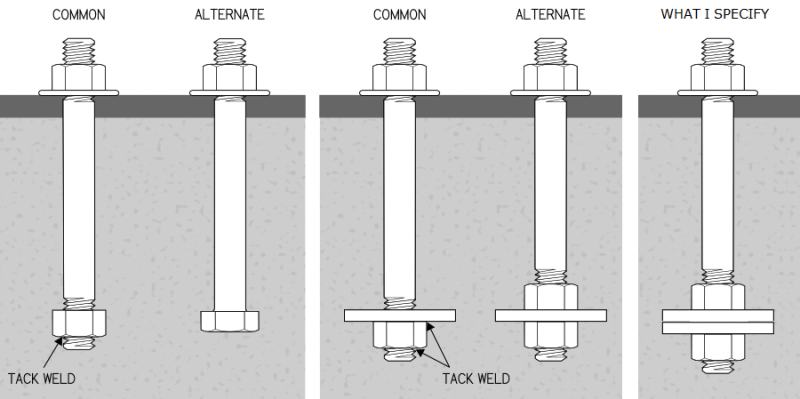Leftwow
Structural
- Feb 18, 2015
- 292
Is there scenarios where J-bolts are stronger? Even though mathematically headed bolts are stronger in breakout and pullout than J-bolts?
Follow along with the video below to see how to install our site as a web app on your home screen.
Note: This feature may not be available in some browsers.
KootK said:Now I remember! There is one reason to like J-bolts that may have some validity. Some feel that they are more resistant to twisting in the concrete when torqued. Not sure how true it is that rods with nuts and washers will spin but that's what I've heard on occasion.
CEL said:How did anyone ever think these WOULDN'T pull out? This looks like Kootk's wet dream for an argument as to tension forces running around a corner bar detail! lol...
BAretired said:This is the criticism I have heard from one contractor when I changed L shaped anchor bolts to nut and washer. Welding the nut to the bolt or using a double nut would help but adds to the cost. I don't recall ever hearing about the anchor bolt spinning when tightening the nut above the column base plate, but unless one of the above measures is taken, the only thing resisting spinning is the bond between the concrete and the anchor bolt.
jayrod said:Around here they're popular only because all of the steel suppliers have literally thousands of 3/4" diameter 18" long anchors bolts with a 3" bend sitting in boxes.
Leftwow said:Archie doesn't that operate on the same principle? Can you say Lshapebolt is a jbolt?
Following the Edmonton tornado of July 31, 1987 which flattened many buildings, I inspected several steel framed buildings where columns had pulled 3/4" diameter J-bolts out from the foundation. The vertical hole left in the concrete foundation appeared to be almost a perfect 3/4" circle with little evidence of concrete cracking, splitting or spalling.
SAIL3 said:CEliOttawa...your fifth point listed above about the influence of the threads on pullout is interesting...I would assume that it would also apply to threaded rods....

sandman21 said:I dont know why you would use two washers
CELinOttawa said:I don't like how thin some of the HDG washers seem to be...
Then provide an actual washer, intended for the application.CELinOttawa said:Call it a paranoid reaction from years of testing materials...

